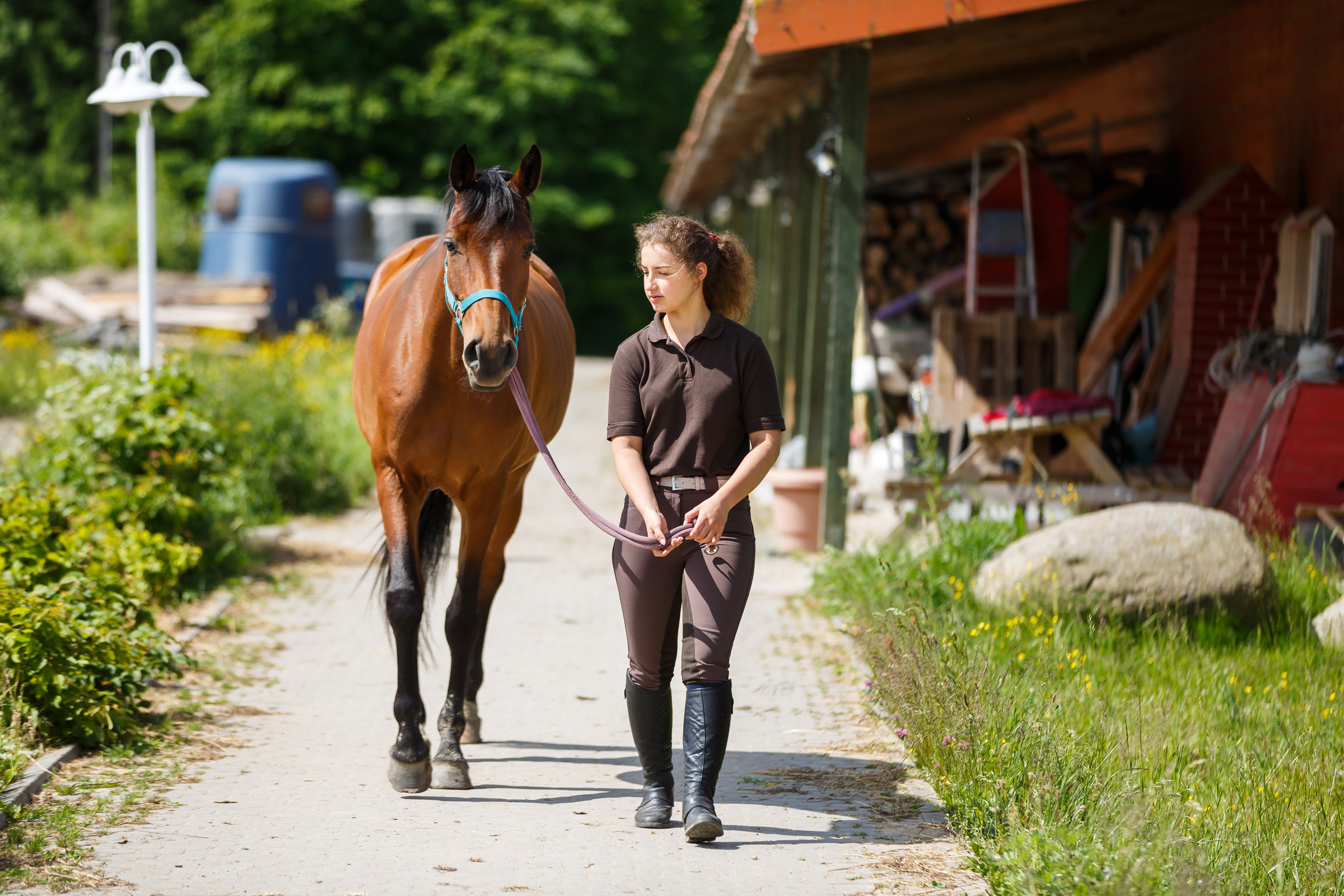
Editor’s note: We know a lot of horse farms and stables take on “working students” to not only have experienced labor, but to mentor the next generation. In this series we’ll answer some questions about working students.
Working students at stables are a lot like interns in the corporate world. They are individuals who hope to learn the skills necessary to become a professional in their chosen career. In an office setting, the job tasks within a normal 9-5 workday, the intern returns home at night. These individuals are often paid at an hourly rate and/or receive college credit. In comparison, working students at equine facilities often begin their days at sunup, live on the property and are paid with a small stipend, lessons and training.
An intern’s job is likely well defined, whereas a working student’s responsibilities are fluid and depend on a barn’s needs. Most often, the duties include feeding, mucking stalls, tacking, untacking, cooling out and bathing horses. The list of chores also likely includes cleaning tack, keeping the stable tidy and even loading hay. Depending on the arrangement, working students might also be responsible for warming horses up, ponying or taking the horses out for a hack.
At Oakstone Stables in Cooperstown, New York, the working students start their day alongside owner Annbrit Hodgins as she custom mixes each horse’s feed ration.
“We make all our own feed starting with an oat base, alfalfa and timothy pellets,” she said. “It’s a good way for them to learn about our process. They get involved in the research we do for adjusting recipes.”
Hodgins has used working students for the past three years. A cottage on the property houses three students and an assistant barn manager. International and local students spend 12-16 weeks living in a cottage on the property and working alongside Hodgins.
“A lot of barns see working students as free help,” she said. “We encourage our interns to get involved in our teaching program, too, and they get a lot of riding time.”
The key to success with working students is defining your goals and the educational benefits you can offer to participants. The experience is as unique as each stable. There isn’t a right or wrong list of duties that can be assigned through an internship experience, it’s a matter of finding balance to suit your needs and the needs of the student.
Although working students might be performing many of the same tasks as a paid barn helper, it’s important to remember that these individuals are seeking knowledge and expect access to it through observation, lessons and hands-on experience.


